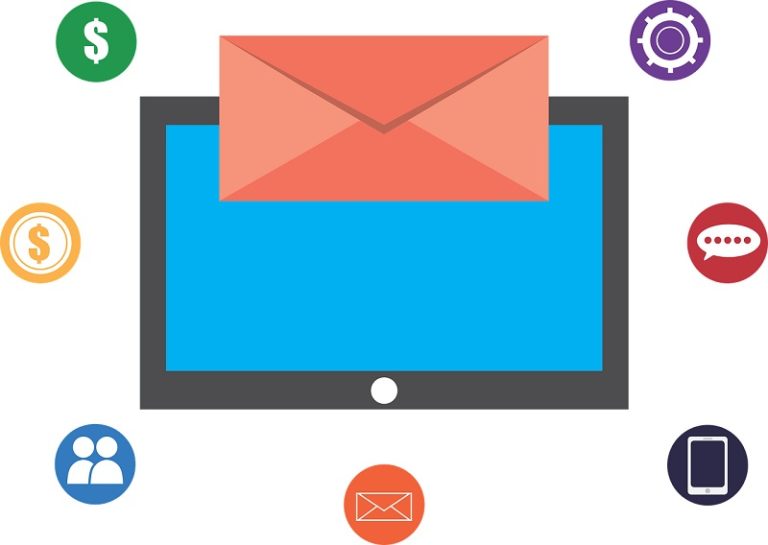

Companies put a lot of stock in email marketing. They have good reason to do so. For many, email provides a relatively low-cost method for reaching vast consumer audiences. For some, it can feel like more effort than it’s worth. But, even if you are happy with your email campaign results, you could achieve even more by using your email metrics.
It would be great if you could just fire off emails and watch the revenue roll in. Like most things, however, email marketing is a practice that requires skill and experience. You will gain both by correctly tracking your email metrics!
Follow these tips to track the most important metrics and learn from them.
Define your goals
Each email campaign has its own goals. Hubspot says, “The goal of your email marketing may be very different from the goals of another company like yours, and may even vary within your own company over time.”
Is your goal to generate new leads or to get repeat business from previous customers? Is it quantity of sales or size? Sometimes the goal of your email won’t even be directly tied to sales. Do you need people to complete a survey or forward your information to friends? Do you simply need more people to walk through your doors? Whatever your goals are, make sure the whole team understands them. From the person who writes your copy, to the person who decides where on the page the clickable links will appear, to the person who gathers the open and click-through data, the whole team should be rowing in one direction.
Decide how to measure them
Here is a list of what one marketer considers the 11 most important email marketing metrics. Yours may differ. Keep the goals you defined above in mind, and use those to dictate what you track.
You are likely tracking open and click-through rates. Those provide valuable information, but by no means the only important information. They can even deceive you into thinking your emails are more successful than they actually are. Michael Thomas of Zapier gives excellent examples of this and says, “It’s not that sky-high open rates and massive mailing lists are bad—it’s just that they’re secondary to revenue.”
Learn what you can measure using your current technology. You could learn whether people open your emails as soon as they receive them or save them until later. See whether the same people open them every time, or if different people respond to different subject lines. You could find out what kinds of devices they use to read your emails. You could track how many people click on which links, and what action they take next. Perhaps they fill out a form requesting a sales demo or phone call. You could track who forwards your email to friends. A wealth of information awaits you.
Then there are those results that your email client can’t measure. If people show up in person for your big sale, do you know how they got there? Unless you ask them as they walk in, you may never know. The same goes for phone calls. Unless the person clicks a link on their cell phone to make the call–which, fortunately for data geeks, they’re doing more–you won’t know where they found your number.
Track your email metrics over time
Results can change depending on the day of week, the time of day, time of year, current events, holidays, and even whether your local sports team won or lost today. You will need a lot of data, over a significant period of time, to draw meaningful conclusions. Track and report regularly. Make it a habit. Thomas recommends reporting metrics to your team weekly.
Format the data in the way that is easiest for you to digest at a glance. Choose a chart full of numbers and create a colorful graph. Better yet, do both. Sometimes looking at something in multiple ways can mitigate bias. Also, different members of your team might absorb information in different ways.
Test one variable at a time
If an email campaign hasn’t performed as you hoped, don’t throw away the whole package. Tweak one element at a time, and use A/B testing for apples-to-apples comparison. Hubspot calls the following components critical: subject line, sender name, personalization, body copy, image, call to action, social sharing links, unsubscribe links, and mobile optimization.
Which element you tinker with first can depend on which outcome you want most to improve. For example:
To improve open rate: Test new subject lines and timing for when you send.
To improve click through rate: Test placement of links, font size, and call to action message.
To improve forwarding: Test placement of forward link or incentive for forwarding.
You get the idea. Again, track carefully. Analyze your data. Give each new adjustment time to work. If you hit “send” and then a major breaking news story monopolizes everyone’s attention, for example, you won’t get accurate results.
So, in short, what email metrics are best to track is unique to your company. Invest the time and energy to figure out what metrics you need to track and which ones you can improve. Your bottom line will reflect the investment.
IMAGE: Maialisa / CC0 Public Domain

